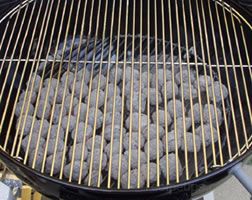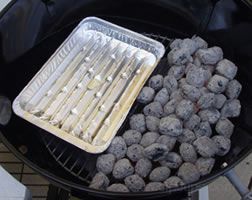 |
How to Grill Turkey - Cooking Tips | ||||||||||||||||||||
| view article online: https://www.recipetips.com/kitchen-tips/t--801/how-to-grill-turkey.asp | ||||||||||||||||||||
Understanding the two most popular grilling styles, Direct and Indirect, is essential to creating a perfect grilled entrée. There are instances when both Direct and Indirect methods are appropriate. The Direct method sears the food in order to create a flavorful crust on the surface, followed by Indirect to prevent burning outside of the food while cooking evenly. The following is a quick reference for cooking method and approximate cooking time for Turkey.
Tips & Techniques: When selecting a whole turkey for grilling, it is best to choose one that is not too large. A 16-pound turkey is the largest size that is safe to grill. The grilling process does not allow the internal temperature of larger turkeys to reach a sufficient temperature quickly enough to destroy harmful bacteria within a safe time period. A smaller turkey is also easier to handle when moving and turning it on the grilling surface. When Indirect grilling, remember to keep lid down, opening can add from 10-15 minutes onto grilling time. Do not use a fork to turn the meat as you are grilling. The piercing causes the juices to escape. A long-handled spatula or tong is more appropriate. Oil grates with no-stick spray (or brush oil on grates) before starting grill to prevent food from sticking. Safe Internal Temperatures Keep yourself, friends, and family safe from food borne illness. To accurately check temperature, the thermometer must be stuck through the thickest part of the meat and away from any bones (bones conduct heat). Poultry is generally safe at 160º, though waiting until it reaches 180º is recommended. | ||||||||||||||||||||
| Copyright 1999-2024 - Tecstra Systems Corporation/RecipeTips.com - All Rights Reserved |

